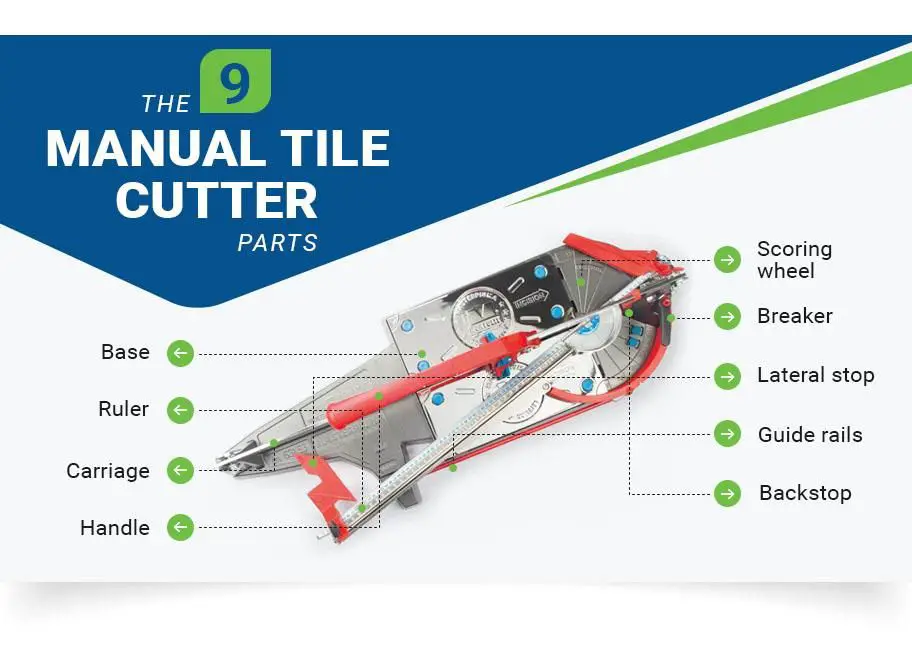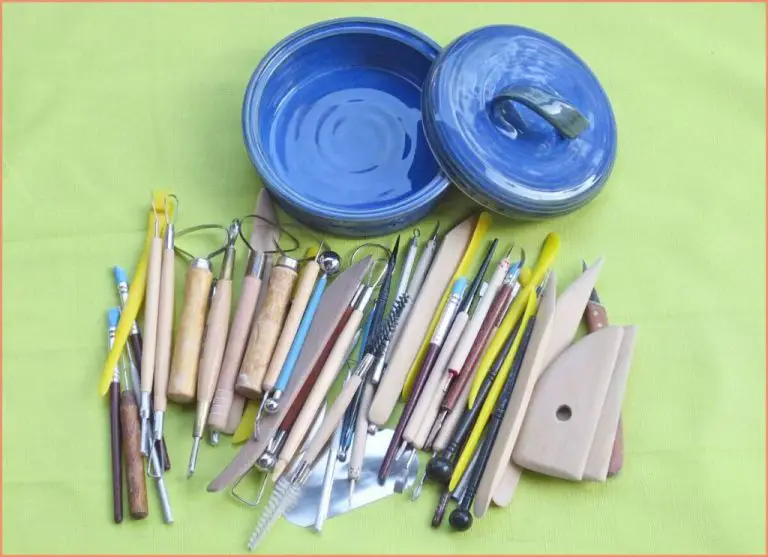Can I Cut Tiles Without A Tile Cutter?
Cutting Tiles without a Tile Cutter
Installing tile can greatly improve the appearance of any space, but perfectly cutting and placing each tile is key to achieving a professional look. While specialized tile cutters make the job easier, many DIYers wonder if it’s possible to accurately cut tiles without this specialized tool. With the right techniques and tools on hand, cutting tiles without a tile cutter is certainly achievable for any determined DIYer. This guide will explore the pros and cons of forgoing a tile cutter, recommend the best manual cutting tools, and provide techniques to ensure precise cuts.
Pros and Cons of Cutting Tiles without a Tile Cutter
Cutting tiles without a tile cutter has some advantages and disadvantages compared to using a specialized tile cutting tool. On the plus side, it can be quicker and more affordable since you may already have basic tools on hand. However, the cuts are often less precise and clean. Here are some of the main pros and cons to weigh:
Pros:
- Does not require buying an expensive tile cutter or wet saw
- Can use basic tools many homeowners already own like a glass cutter or angle grinder
- Very portable – can cut tiles wherever needed
- Fast and straightforward for simple straight cuts
Cons:
- Difficult to make precise, clean cuts, especially for curved edges or specialty tiles
- Higher chance of breaking tiles during the cutting process
- Can create more dust and debris
- Results in rougher tile edges that may need extra smoothing/grinding
- Not efficient for large tile projects or intricate tile work
For small, simple tile jobs, cutting without a tile cutter may suffice. But for more advanced tile projects, investing in the proper specialized tools can save time and lead to higher quality results.
Manual Tile Cutting Tools
Some common manual tile cutting tools include:
- Tile nippers – These are plier-like tools used to nibble away tile edges. They work well for curved or detailed cuts. Tile nippers allow you to shape and refine cuts made by other tools.
- Tile snips – Similar to metal snips, these sharp shears can cut through tile. They are good for making straight cuts in small tiles.
- Tile rulers/straight edges – Used as guides for scoring tiles before snapping them. Tile rulers help ensure straight cuts.
- Grout removal tools – Used to clear out old grout so new tiles can be positioned. Grout blades, carbide scrapers, or rotary tools may be used.
- Tile pencils – Specialty pencils used to mark cut lines on tiles. Their markings resist smearing when wet.
With practice and care, these simple hand tools allow tiling projects to be completed without investing in power cutting equipment. Manual methods may take more time and effort than electric tile cutters, but the results can be just as precise for small jobs. Using rulers, following scored lines, and finishing edges with nippers can produce professional looking tile installations.
References:
[1] https://www.homedepot.com/b/Flooring-Flooring-Supplies-Flooring-Tools-Tile-Tools-Tile-Cutters/N-5yc1vZcdt6
Score and Snap Method
The score and snap method is one of the most common techniques for cutting tiles manually without a tile cutter. It involves using a scoring tool to create a shallow line on the tile’s glazed surface, then snapping the tile along that line to get a clean break.
To start, you’ll need a scoring tool like a tile cutter handle or tile knife. Place the tile on a solid, flat surface and position the scoring tool at your desired cut line. Apply firm, steady pressure as you drag the tool across the tile’s surface. You want to score a line deep enough to weaken the tile, but without cutting all the way through. Generally 3-4 passes along the line is sufficient.
Once scored, flip the tile over so the scored line is facing up and centered over the edge of a table or bench. Press down firmly on the tile edges to create tension across the scored line. The tile should “snap” cleanly along the scored line. Use a rubbing stone afterwards to smooth any rough edges.

This manual method takes some practice to master the right scoring depth and snapping technique for clean breaks. Thinner tiles around 1/4 inch thick tend to snap more easily than thicker tiles. Proper scoring is key – too shallow and the tile won’t snap cleanly, too deep and the tile will shatter.
Wet Saw Method
Using a wet saw is one of the best ways to achieve straight, clean cuts when cutting tiles. Wet saws use water to cool the diamond blade and tile during cutting, which helps minimize chipping on the tile edges. The water also reduces dust from the cutting process.
To use a wet saw to cut tiles:
- Adjust the saw table to the proper angle if you need mitered cuts. Keep it flat for straight cuts.
- Place the tile face up on the saw table up against the guide fence. Make sure it is fully supported.
- Hold the tile firmly in place and turn on the saw. Allow the blade to reach full speed.
- Slowly feed the tile through the blade, keeping it square against the fence. Move at a steady pace for the cleanest cut.
- Continue holding the tile firmly throughout the cut until the blade fully passes through the tile.
- Turn off the saw and remove your cut tile. Check that the cut is straight and clean.
Wet saws allow for miter cuts, straight cuts, angled cuts, and more. When used properly with steady hands and attention, they can achieve very precise, professional cuts. Be sure to read the user’s manual thoroughly before operating any wet saw.
For more tips on using a wet saw to cut tiles cleanly, check out this helpful video: How to Cut Tile With a Wet Saw
Grinder Method
Using an angle grinder is a good option for making curved cuts in tiles. Angle grinders allow you to cut custom shapes and holes in tiles that would be difficult or impossible with a manual tile cutter. They are useful for cutting circles, notches, and intricate curves.
When using an angle grinder to cut tile, choose a diamond blade made specifically for cutting ceramic or porcelain. Clamp the tile securely to prevent vibration. Mark the cutting line with a pencil or marker. Then, wearing safety glasses and a mask, carefully cut along the line with the grinder. Go slowly and avoid applying too much pressure, which can cause chipping. Make several shallow passes rather than one deep cut. Smooth any rough edges after cutting using a rubbing stone.
Angle grinders allow more versatility for curved cuts compared to score-and-snap tile cutters. However, they produce more dust and require safety precautions. Overall, a grinder is a useful tool for unique tile shapes. Just take it slow and steady.
Safety Tips
When cutting tiles without a tile cutter, it is extremely important to follow safety precautions to avoid injuries. Two key tips are to wear protective eyewear like goggles and to wear a protective mask or respirator. As this source explains, eye injuries are common when using manual tile cutting tools. Flying pieces of tile or debris can damage eyes. Wearing ANSI-approved goggles protects your eyes. You should also wear an N95 mask or respirator to avoid breathing in dangerous silica dust particles that tiles produce when cut. Silica dust can harm lungs if inhaled without protection.
Achieving Precise Cuts
While tile cutters allow for more precision, it is possible to achieve clean, straight cuts without one using proper technique. Here are some tips for precision when cutting tiles manually:
Use a square or right angle guide when scoring the tile to ensure your cut line is straight. Run the cutting wheel or blade along the guide to maintain the angle.
Take your time scoring the tile and don’t rush through the cut. Multiple light passes with the cutter will make a better score line than trying to cut through in one pass.
For straight cuts along the tile’s length, score the tile on the finished side so you can follow the edge as a guide. For diagonal cuts, score on the backside.
After scoring, place the tile on a solid surface with the score line just off the edge. Press down firmly and evenly on both sides of the break to snap the tile cleanly.
When cutting small tiles or making detailed cuts, use tile nippers after scoring to break off small fragments for a precise edge.
If the tile doesn’t have crisp edges after snapping, use a sharpening stone or wet/dry sandpaper to smooth it out. Bevel the cut edge slightly so it doesn’t have sharp corners.
Work slowly and carefully, checking your measurements twice to make sure your cuts are accurate. Having patience goes a long way for precision tile cutting without a tile cutter.
Common Cutting Mistakes
Some of the most common mistakes when cutting tiles without a tile cutter include cracking, chipping, and uneven cuts. Trying to snap the tile without proper tools often leads to cracking or chipping along the cut line. This happens because the force is unevenly distributed when attempting to break the tile by hand [Source: https://www.familyhandyman.com/list/10-common-mistakes-diyers-make-when-they-lay-tile/]. Using a manual tile cutter ensures even force across the scored line.
Additionally, freehand cutting with a grinder or cutting by hand frequently results in uneven or wavy cuts. It is challenging to cut a perfectly straight line without a guide. Tile cutters have an integrated guide to ensure straight cuts. Grinder blades tend to wander without steadying the tool against a guide. Jagged edges are visually unappealing and complicate properly installing the tiles [Source: https://www.rubi.com/en/blog/10-most-common-mistakes-when-laying-tiles/]. Investing in the proper cutting tools results in clean, even tile edges.
Conclusion
Cutting tiles without a tile cutter can be accomplished through various methods and tools depending on the precision and complexity required, but using a tile cutter is still the most efficient and safest way to get professional results. While freehand score and snap methods may work for simple straight cuts, the wet saw and grinder methods allow for more intricate cuts but require proper safety precautions. Manual tile nippers and cutters can aid in the process but have limitations on tile material and thickness.
In summary, for most home DIY projects, carefully scoring and snapping with a cutting tool is likely sufficient, but utilize other methods with care and consider investing in a tile cutter for frequent or complex tile work. Regardless of the method, measure carefully, keep the scored line lubricated, work slowly, and use safety gear like eye protection and masks. With patience and practice, quality tile cuts can be achieved without a tile cutter, but having the proper tile cutting tools makes the job significantly easier and reduces mistakes.




